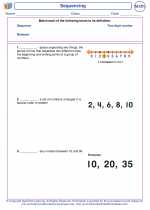Sequencing
Sequencing is the arrangement of items or events in a particular order. This order can be based on numbers, letters, dates, or other criteria. Understanding sequencing is an important skill in mathematics and everyday life.
Numeric Sequencing
In mathematics, numeric sequencing involves arranging numbers in a specific order. This can include counting forwards or backwards, understanding number patterns, and identifying the next number in a sequence. For example, the sequence "2, 4, 6, 8, __" follows a pattern of adding 2 to each number to get the next number in the sequence.
Alphabetic Sequencing
Alphabetic sequencing involves organizing letters of the alphabet in a particular order. This can include arranging words in alphabetical order or understanding the position of each letter in the alphabet. For example, the word "apple" comes before "banana" in alphabetical order because "a" comes before "b" in the alphabet.
Sequencing Events
In real life, sequencing is important for understanding the order of events. For example, understanding the steps of a recipe, the stages of a lifecycle, or the sequence of historical events requires the ability to arrange events in a specific order.
Overall, sequencing is an essential skill that helps children and adults organize information, understand patterns, and make sense of the world around them.
[Sequencing] Related Worksheets and Study Guides:
.◂Math Worksheets and Study Guides Second Grade. Sequencing
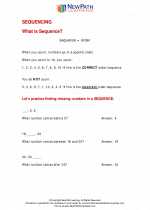
 Worksheet/Answer key
Worksheet/Answer key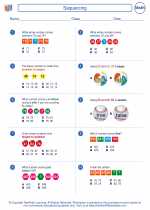
 Worksheet/Answer key
Worksheet/Answer key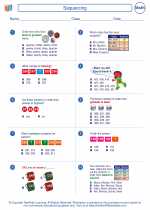
 Worksheet/Answer key
Worksheet/Answer key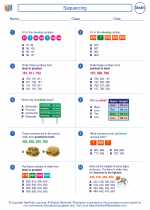
 Vocabulary/Answer key
Vocabulary/Answer key